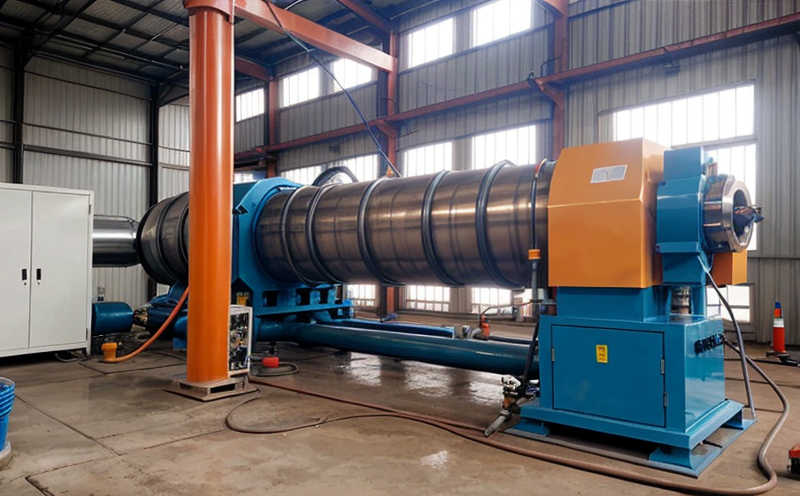Hydraulic system inspection
The hydraulic systems in lifting equipment and cranes are critical components that ensure smooth operation and safety. These systems operate under high pressure, which makes them prone to wear and tear over time. Regular inspections play a crucial role in identifying potential issues before they lead to catastrophic failures.
Hydraulic fluid is the lifeblood of these systems; it transmits power, lubricates moving parts, and removes heat generated during operation. Over time, hydraulic fluids can degrade due to contamination, oxidation, or simply through normal use. Contamination from external sources such as dirt, water, or metal particles can accelerate degradation.
One of the first signs that a hydraulic system is in need of attention is a change in fluid condition. Visual inspection might reveal discoloration, sediment buildup, or an unusual odor. However, these observations alone are not enough to ensure safety and reliability. Therefore, detailed testing is necessary to assess the health of the fluid.
Testing typically involves several procedures including viscosity measurement, water content determination, particle size analysis, and chemical composition analysis. Viscosity tests help determine if the fluid has thickened beyond acceptable limits, which could indicate excessive contamination or degradation. Water content is crucial because even small amounts can cause significant damage by promoting corrosion.
Particle size analysis identifies whether foreign materials have entered the system and are causing wear. Chemical composition analysis ensures that additives designed to protect the hydraulic components remain effective. If any of these parameters fall outside specified ranges, it indicates a need for maintenance or replacement of the hydraulic fluid.
In addition to fluid testing, internal inspections using endoscopes provide visual assessments of condition inside the hydraulic cylinders and pipes. This helps spot signs of wear, cracks, or leaks that could compromise system integrity. By combining these methods, we can provide a comprehensive evaluation of your hydraulic systems.
Our team at Eurolab employs advanced techniques like Fourier Transform Infrared Spectroscopy (FTIR) for precise chemical analysis and Laser Diffraction for accurate particle sizing. These technologies allow us to deliver highly accurate results that help maintain optimal performance levels in your hydraulic systems.
- Environmental Impact: By preventing failures caused by neglected maintenance, we contribute positively towards reducing waste generated from prematurely discarded equipment.
- Safety Measures: Ensuring continuous safe operation of lifting equipment and cranes directly impacts public safety. Our inspections reduce risks associated with mechanical failure leading to accidents involving personnel or property damage.
Eurolab Advantages
At Eurolab, we pride ourselves on offering unparalleled expertise and service when it comes to hydraulic system inspections for lifting equipment and cranes. Our highly trained professionals have years of experience working across various industries, ensuring they understand the unique requirements of different systems.
We utilize state-of-the-art technology such as FTIR spectroscopy and laser diffraction in our inspections, providing accurate results that can be trusted. Our comprehensive approach not only detects current issues but also helps predict future problems through trend analysis based on historical data from previous tests.
Our commitment to excellence extends beyond just performing inspections; we take an active role in educating clients about best practices for maintaining hydraulic systems. This includes providing recommendations tailored specifically to your equipment, helping you make informed decisions regarding maintenance schedules and product selection.
We also offer flexible scheduling options so that our services do not interfere with operational demands. By prioritizing customer convenience while delivering high-quality results, Eurolab ensures satisfaction at every step of the process.
Customer Impact and Satisfaction
The impact of thorough hydraulic system inspections on customers cannot be overstated. For quality managers, this service provides peace of mind knowing that all necessary checks are being carried out regularly to ensure compliance with relevant regulations.
Compliance officers appreciate having detailed records of these inspections which can be used during audits or when justifying budget allocations for maintenance activities. R&D engineers benefit from insights gained into potential improvements needed within hydraulic systems, aiding in innovation efforts.
For procurement teams involved in selecting new equipment or replacement parts, our inspection reports serve as valuable references highlighting areas where suppliers may not meet expected standards. This ensures that only reliable components are purchased, enhancing overall product quality and lifecycle cost savings over time.





